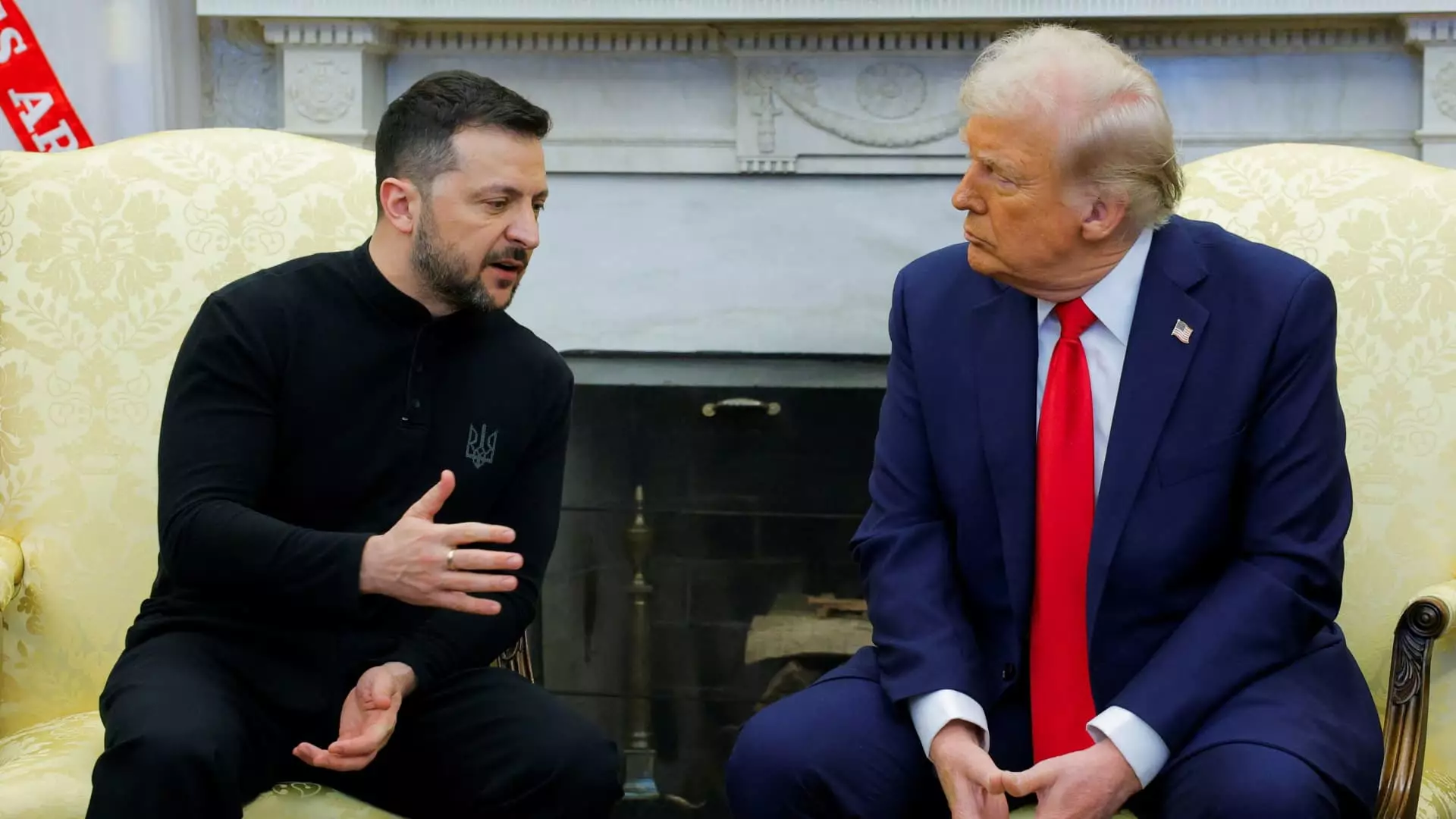In a move that appears both symbolic and substantial, U.S. President Donald Trump recently met Ukrainian President Volodymyr Zelenskyy in a marble-clad Vatican, surrounded by the echoes of peace preached by Pope Francis. This encounter occurred during a historically significant moment, yet the backdrop of a funeral only amplifies the urgency of their dialogue concerning Russia’s ongoing war with Ukraine. With no aides present to intervene, the pair engaged in a 15-minute conversation that could potentially reshape the geopolitical landscape. Despite their previous clashes and tensions in the Oval Office, the hope for a breakthrough in peace negotiations looms large over this meeting. Yet, one must scrutinize the sincerity and feasibility of what lies ahead.
The Subtext of the Meeting
Zelenskyy argued that the meeting could be profoundly historic if it results in a concrete peace agreement. On social media, he expressed cautious optimism: “Good meeting,” he noted, emphasizing the essential topics they broached, such as the protection of civilian lives, a complete ceasefire, and measures to ensure lasting peace. However, one cannot help but wonder whether Zelenskyy’s beautiful words are simply a veneer over a far more complex reality where diplomatic bullshit masquerades as progress.
The historical weight of this meeting, framed by the presence of a global leader revered for his messages of kindness and humility, should not obscure the fact that both leaders have painted themselves into corners. Trump, who has openly entertained courting Russia, risks offering Kyiv too generous concessions, particularly regarding Crimea. The principle of appeasement has proven its futility time and time again in international relations. Zelenskyy must navigate this minefield with care, lest he unwittingly compromise the very sovereignty and principles he champions.
Competing Agendas and Unspoken Frustrations
Unlike the mutual golden glow of optimism, stark differences exist between the positions of the Trump administration and its Ukrainian counterparts regarding peace negotiations. Reports suggest a willingness from Washington to recognize Crimea as Russian territory, a move that would signify capitulation from Ukraine’s steadfast stance against territorial aggression. The implications for Ukraine’s credibility as a sovereign nation could reverberate far beyond the conflict, impacting its relationships with Western allies.
It’s evident that the poison of distrust still courses through Trump and Zelenskyy’s relationship. Their interactions have been marked by barbed exchanges, with Zelenskyy previously denouncing Trump’s fixation on convoluted narratives purportedly favoring Moscow. Moreover, even before the diplomatic tightrope walking began, the U.S. leader accused Zelenskyy of being cavalier about international safety during their confrontational Oval Office meeting, where the Ukrainian President’s choice of military-style attire over a suit became a talking point rather than a matter of substance. This atmosphere does not easily lend itself to the constructive dialogue necessary for effective diplomacy, raising questions about the genuineness of this so-called productive meeting.
A Fragile Hope for Collaboration
Despite the frosty undertones, both leaders have a vested interest in forging a truce. Trump appears motivated to seal a peace deal, not just for humanitarian grounds but also to bolster his political capital. In a landscape where perceptions of strength can sway voters, he must present himself as an effective peacemaker rather than a leader caught in partisan sniping. Simultaneously, Ukraine looks to leverage any goodwill Trump might summon to champion its cause, amplifying the desire for an end to hostilities while simultaneously resisting external pressures.
The Vatican meeting stood as a litmus test for their respective leadership. Though they posed for snapshots of unity, the questions loom large about the depth of their shared goals. The hype surrounding their discussions cannot mask the world’s grim uncertainty as nations eye the fallout of any miscalculation. In diplomatic terms, the meeting is a tactical high-wire act without a safety net, where any slip could lead to catastrophic consequences.
The Broader Implications of Failure
War is never just an isolated conflict; it constructs a legacy of pain and suffering. Cardinal Re’s poignant reminder during the funeral service resonates powerfully—”War always leaves the world worse than it was before.” His observation feels hauntingly applicable when considering that even the most meaningful discussions can dissolve before they establish true dialogue. Should these leaders fail to secure even the faintest semblance of peace, the implications will not only mar their legacies but could plunge Europe into further turmoil, forcing neighboring nations to take sides while contributing to a volatile landscape.
As Trump returned to his aircraft post-meeting, questions lingered about whether true progress was made or merely the façade of diplomacy. For now, the world watches, holding its breath for what may or may not come from a historic encounter wrapped in marble and spiritual calm, masked by the gnawing uncertainty of global politics.



Leave a Reply